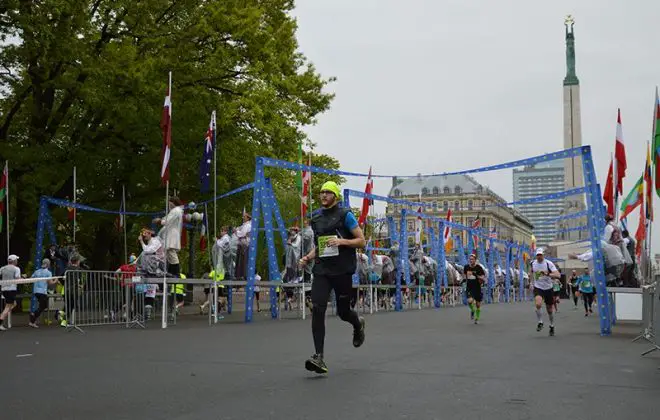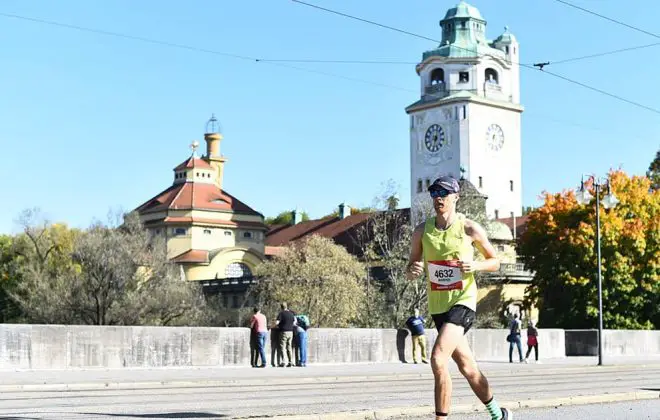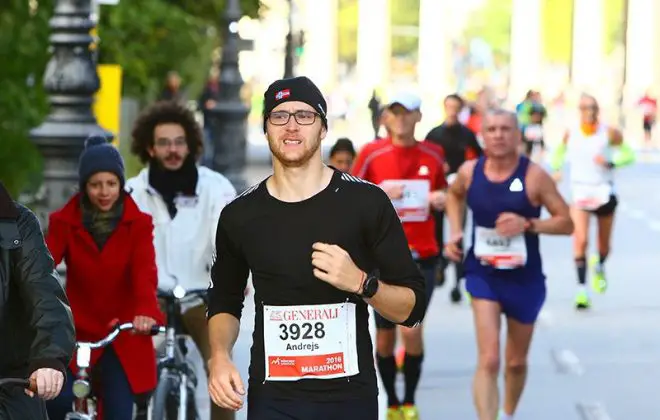IRONMAN Austria Race Report – The Story Of My First Ironman Race
The idea of running my first Ironman race got planted in my head years ago. Back in university we had this one young lecturer who was really into marathon running and he told us how he trained for running with the guys who are training for an Ironman.
When he explained that Ironman is a triathlon that consists of a 3.8K swim, followed by a 180K bike ride and a marathon after that I thought “how can you possible run after all of that?”. The whole idea sounded crazy to me then. Mostly because I was very focused on kayaking.
The Ironman part of the lecture was actually about the power of vision, comfort zone and setting goals that scare you. The lecturer encouraged us to set a personal challenge for ourselves that day. Something we would really want, but sounds crazy – an epic trip, an adventure race or even a personal project. The whole point was to inspire us to not be afraid to live and find ways to make it happen.
I didn’t write ‘run an Ironman’ that day, but the message stuck with me. Not until recently I revisited the idea of a big challenge. After starting this blog and training for my first marathon I needed a project. Something that seemed impossible, something that would push me out of my comfort zone and force me to learn. And that’s when I remembered about the Ironman.
Ironman Austria race report
So, many years after that ‘scary goals’ lecture there I was. On my way to Klagenfurt in the South of Austria to run my first Ironman race.
The race venue was just a 4 hour drive from Munich. I arrived only a couple of days before the race – more than enough for all final preparations.
Throughout the week the weather was burning hot, as Europe was experiencing a massive heat wave. It was a good call to spend more time at home and arrive only in time to complete all the admin stuff. I didn’t do much on days leading to the race and even skipped or cut short some of the sessions I planned to avoid getting fatigued.
Related: Ironman Checklist – Tips On How To Organize The Ironman Race Week
Ironman Austria course
One thing I did do during the race weekend is make a thorough bike course check. In a car with air conditioning on. I followed the map that organizers provided and took mental notes of all the technical sections. That really helped me to be more confident on the bike and avoid repeating last year’s DNF in Kraichgau.
The bike course at Ironman Austria has been changed this year and now involves 2 separate loops of ~90K each. It was a tough, but beautiful route. With ~1,600 meters of elevation gain there were only a couple of flat sections where you can really get into a rhythm for more than 20 minutes. Besides those it was mostly up and down all the way. With several steep and technical descents.
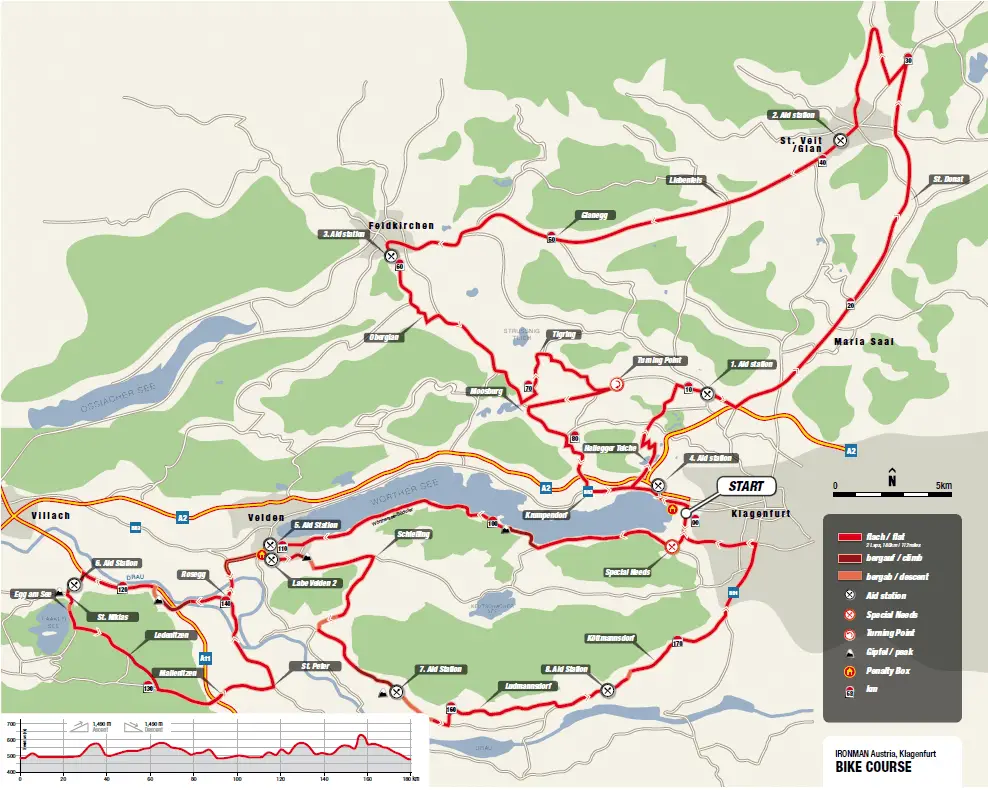
As for the swim and the run, both routes were quite straightforward.
The swim takes place in the beautiful and clear Wörthersee with mountains and hills around. It’s a rectangular shaped course that goes into the lake and after 2 short turns goes back to the shore and finishes in a channel.
The run course features a short ‘lap of honor’ around transition area and the park, followed by 2 laps of ~20K. Each lap takes you first to the village of Krumpendorf in the West and then all the way to the Klagenfurt city center in the East. The course is very flat, except for a couple of overpass sections which appear steep, but aren’t tough.
My first Ironman race morning
The morning of the race flew by in an instant and I almost felt like on an autopilot.
I woke up at 3:45 a.m. despite having trouble falling asleep the day before. Shower, breakfast, dressing up and pre-mixing nutrition – I was so focused on making things right in so little time that I felt woken up only on a 30-minute drive to the start. Once at the venue I set up everything in transition, did my usual pre-race warm up and was ready to go.
Even with minutes left until the start of my first Ironman race I still couldn’t grasp the idea that I have 10+ hours of exercising ahead.
I told myself so many times Ironman is nothing more than a long training day that I actually started believing it.
I didn’t feel stressed or nervous. Instead, I felt excited and ready to start.
Swim (3.8k) – a looong warmup
During the race briefing on Saturday the race organizer shared the news that it will be a non-wetsuit swim. I didn’t feel that would be a problem, even though I haven’t done any non-stop effort of over 2K without one.
Still, it was good to know that a day before, as I was able to squeeze in a short no-wetsuit session on the race course right after the briefing.
Luckily, besides the wetsuit I also packed a swimskin just in case.
Related: My Ironman Packing List – Gear Bags, Essentials And More
Personally, I felt a bit cold in the morning waiting for the start after a warm up. The start area was quite spacious for the 1:00-1:10 hour group, so I did a lot of arm circles to keep myself warm. Then, once I got 200 meters into the swim, I actually felt quite comfortable. Not too hot, not too cold.
My plan was to swim easy, don’t stress about the pace and just focus on technique. Pull through the whole stroke, keep the core engaged and maintain a high stroke rate.
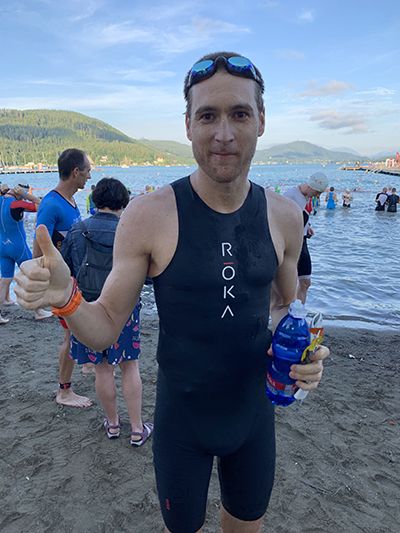
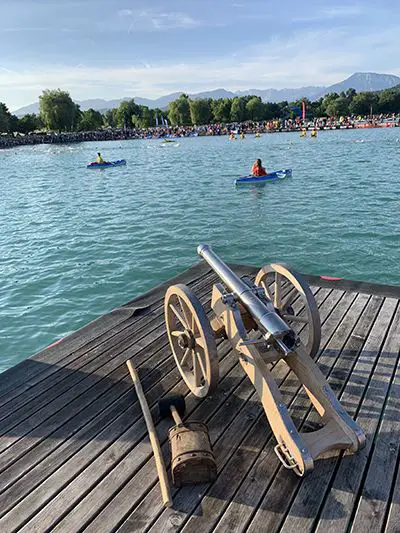
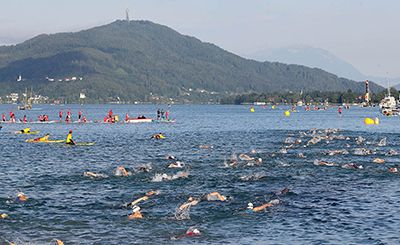

Troubles sighting
The first third went really well. During the Saturday swim I practiced sighting the first straight and was confident about seeing those big yellow buoys. Swimming (and surfing) is the only sport where I don’t wear glasses, so sighting is sometimes a challenge for me.
After the first turn I had trouble seeing the next turn buoy, so tried to follow the general pattern of swimmers. I did notice that the pattern wasn’t straight and kind of like ‘hugged’ every buoy in between the turn buoys. So, I tried to find a middle line between all the huggers and swim there.
After the second turn the course goes back to shore against the rising sun. While I could see trees in the distance, I couldn’t tell if we were swimming straight or no.
Good or bad vision, I felt nobody around me could clearly see the buoys and, like me, followed whoever was in front.
The last kilometer of the swim course continues through the channel with spectators cheering on both sides and is notorious for being fast. With all the people swimming in the channel a massive current is created and my 500m splits were on average 30 seconds faster.
Swimming in the channel was exciting at first, but halfway through it I was eager to get out. It also stank quite a lot and all I could think of was not to swallow any water accidentally.
Swim time: 1:06:59. Not bad for my first Ironman race. I got out of the water feeling surprisingly good. No fatigue in shoulders and my heart rate while running in transition was good and low.
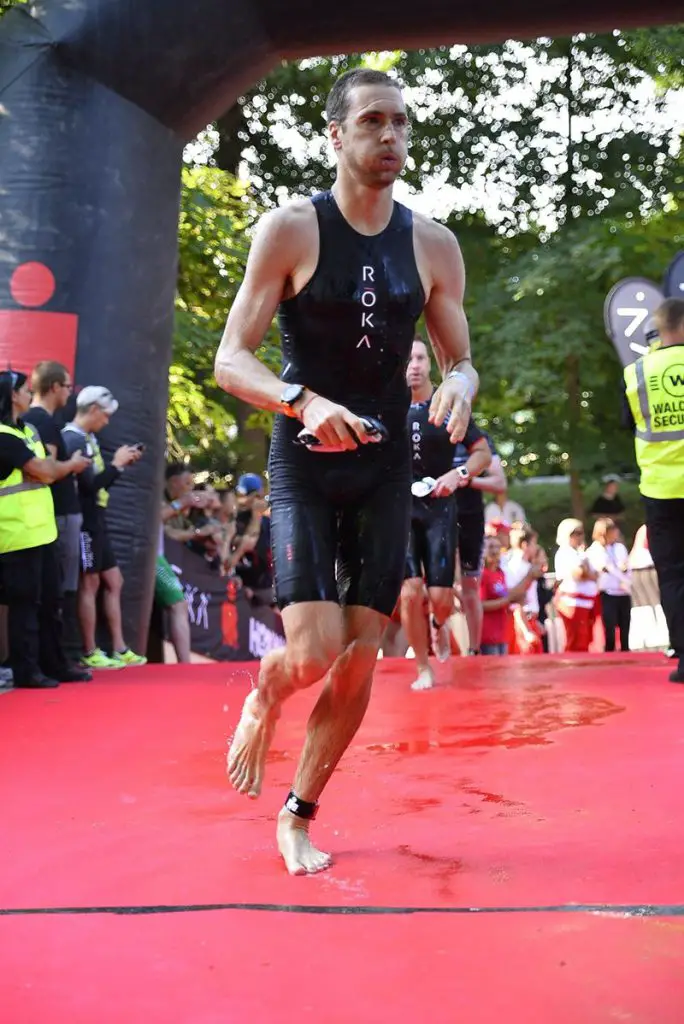
Bike (180k) – hilly, but beautiful
The bike was the biggest concern for me. Even though I did many 4-5 hour sessions, I was still not sure how will I respond to all the hills and intensity of my first Ironman race.
Also, the race organizers warned us during the race briefing that there’s a strong possibility of thunderstorms and heavy rainfall on race day. Even though I drove through the majority of the race course and saw that technical and fast sections were well marked, racing on hilly wet roads, in thunderstorm and with gusts of wind was the least I wanted.
As I exited the swim, however, the weather seemed ideal for the bike. Sunny, around 20 degrees, no wind – a perfect Sunday morning. Nothing compared to the +35 degree heat the day before and nothing that would predict a thunderstorm.
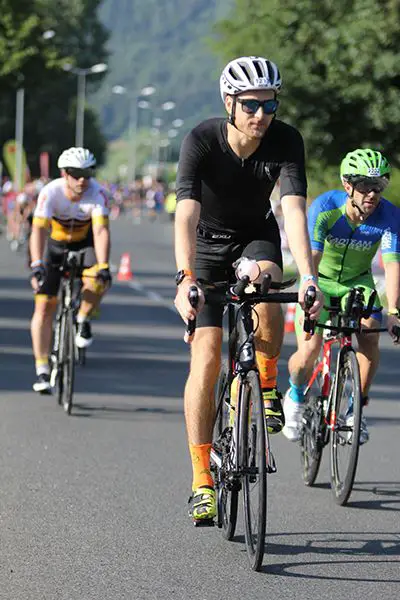
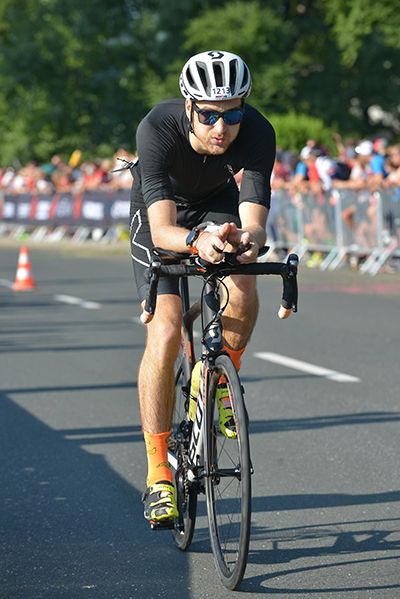
The first hour of the bike felt quite good. The large portion of it was on a closed highway and I tried to ride as easy as possible, maintaining the ‘conservative’ power of 190W and heart rate in Zone 2.
But that was it. After 40K or so the bike course turned to the hills and my heart rate started to climb. On ascents I had hard time keeping it within Zone 2 and frequently noticed my power going over 240W. I tried to keep it low and use the smallest rings, but I’m not sure I did a very good job.
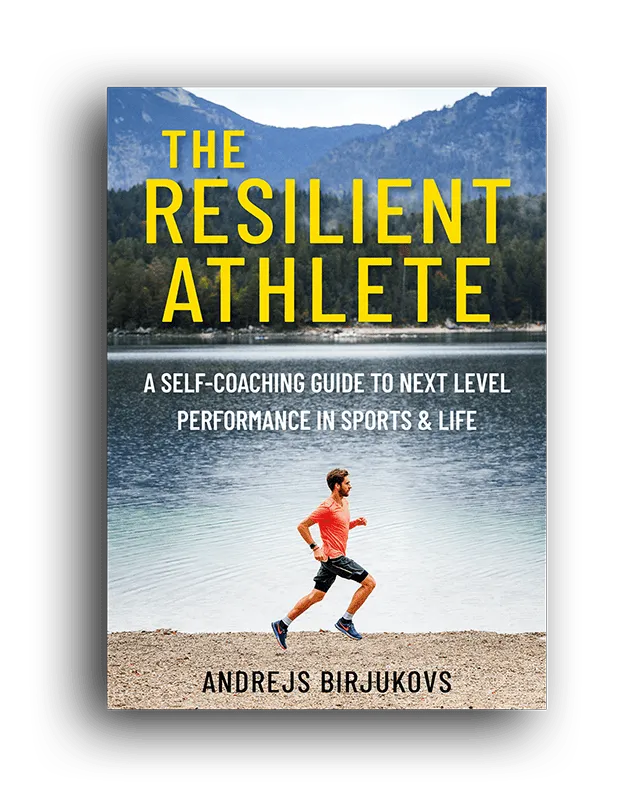
The Resilient Athlete
A Self-Coaching Guide to Next Level Performance in Sports & Life
Are you aiming to become a resilient athlete who is able to withstand any pressure? Be able to jump on any opportunity? Take any challenge life throws at you head on?
Then this book is for you.
Learn moreLow on energy
After 80K or so I hit a rough patch. I didn’t feel any pain or tightness in the legs, but I did feel I was slowly fading – as if I was low on energy. Where an hour ago I could easily push 190W it was only 170W now.
Luckily, at that point the course went downhill and at 90K there was an aid station where I refilled my aero bottle with my gel mix and drank a lot of iso. The start of the second loop is also a somewhat flat sections, so towards 100K I managed to recover a bit.
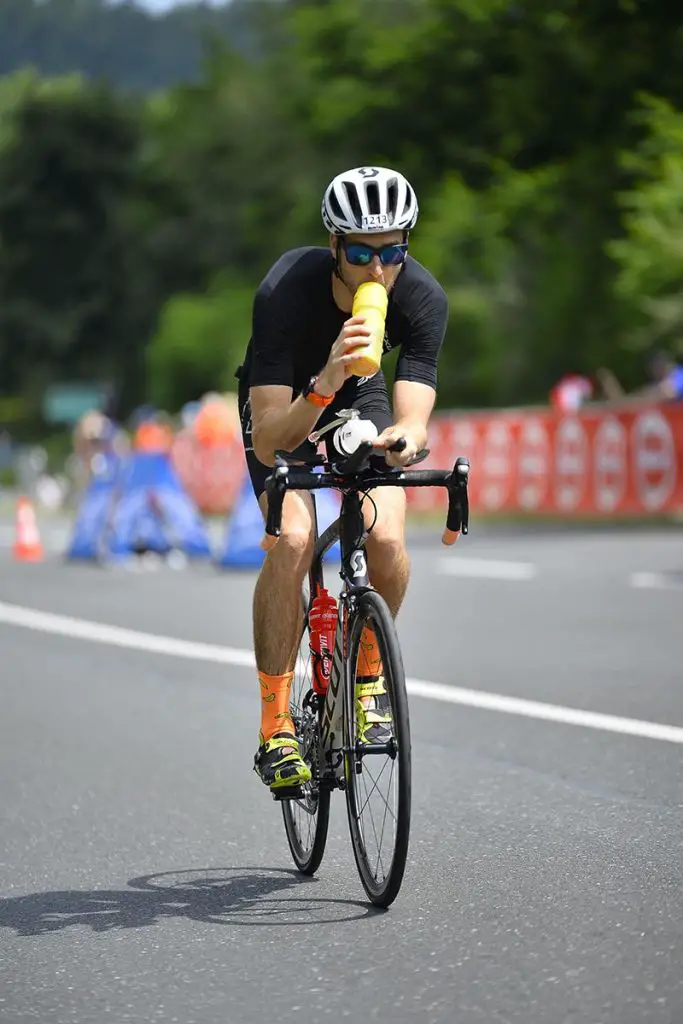
Ironman Austria bike course passes through some 30 small but cute Austrian towns and it seems that all the locals were out cheering and yelling “hop, hop, hop”. All that really helps to take your mind away – even when you’re climbing at less than 10km/h and don’t have much hop left in you.
Overall, I was pretty surprised at how the hours ticked by. Compared to the first half, the second loop had more pronounced hills and faster descents, which added a nice variety to the race. Towards the end, however, I started feeling down again.
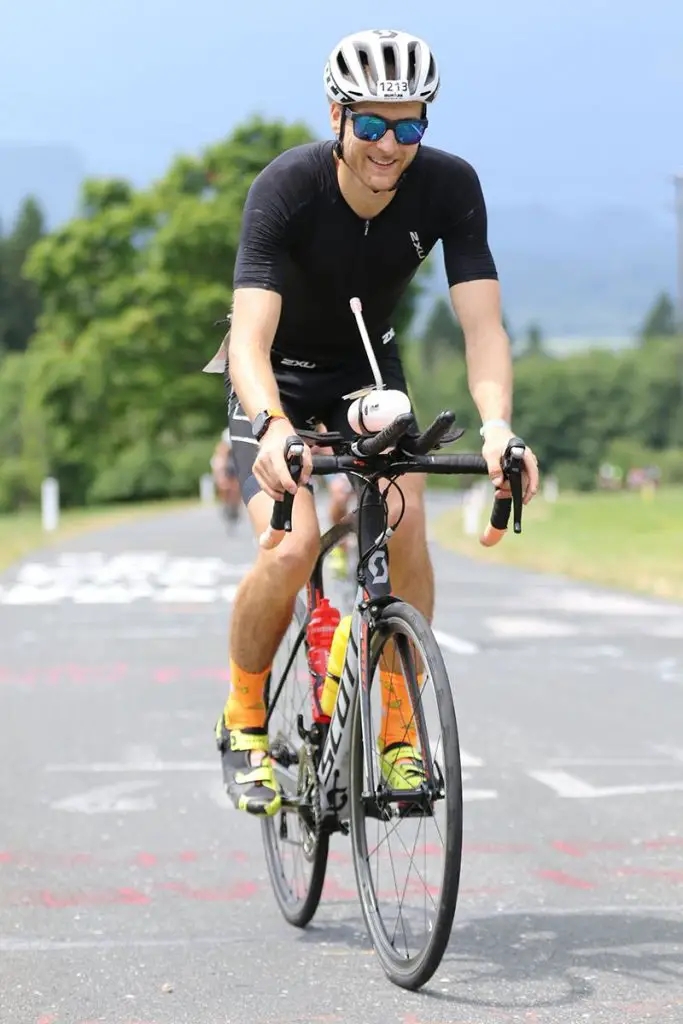
Looong way to T2
There’s one particularly large climb near the end of the second loop – Rupertiberg. It’s steep and consists of two sections. While the first part seems ok, the second forces you to stand up and push hard. Spectators are yelling, offering beer and in general having a good time watching others suffer. Yet, all I could think of at that time was “How would it look if I would step off and push my bike?”.
Once at the top I expected the course to go downhill, but I might have read the map wrong. Instead, there was a stretch of rolling hills where you ride downhill only to climb back soon after. It was the ~170K marker (20K after the climb) after which the course goes downhill into Klagenfurt and flat into transition.
I was really looking forward to that section, so that I can recover before the run. However, the weather started to deteriorate and the wind quickly picked up. In my sunglasses it felt as dark as in the evening.
The final 5K were against a strong headwind and required a lot of effort and balance to avoid being pushed off the road by strong gusts of crosswind.
Bike time: 5:48:16. I came into transition just as the first drops of rain signaled an upcoming storm. As I was putting on my running shoes, there was this very distinct moment when a very loud thunderstorm exploded and the rain started to pour heavily on the tent. The tent went silent for a split second and then everybody started laughing.
Nobody was thinking of giving up. If it was easy, it wouldn’t be called Ironman.
I remember reading this quote during Luxembourg’s 70.3 last year and with that mantra I set out for a very wet run.
Run (42.2k) – wet and tough
During those first several minutes while I was in transition large piles of water have already formed on the street. As I started the run the rain turned into a complete downpour and continued until at least 8 kilometers into the marathon.
I was a bit concerned about blisters from having wet feet at the beginning of the marathon. That turned out fine and shouldn’t have been my primary concern.
All the spectators were hiding under roofs and trees, all hugging together to optimize the space. They were really determined to be there to cheer the athletes and produced a roar of appreciation every time I showed them a thumbs up.
Despite the rain I felt awesome heading out from T2. In fact, first 3K went by very easy and fast, as I was pumped about the challenge to run in the pouring rain and was a bit cold from all the wind. I clocked those kilometers at around 4:30-4:40 pace which was at least 20 seconds faster than my plan.
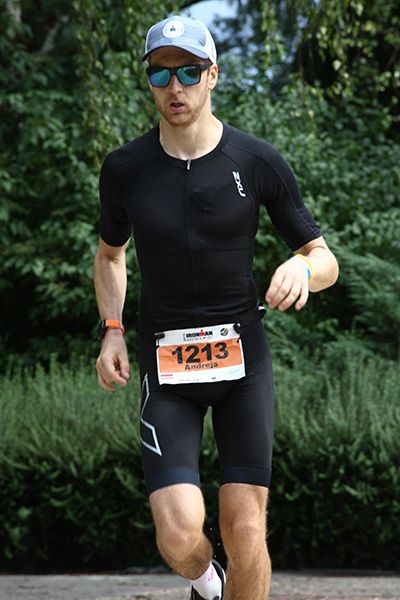
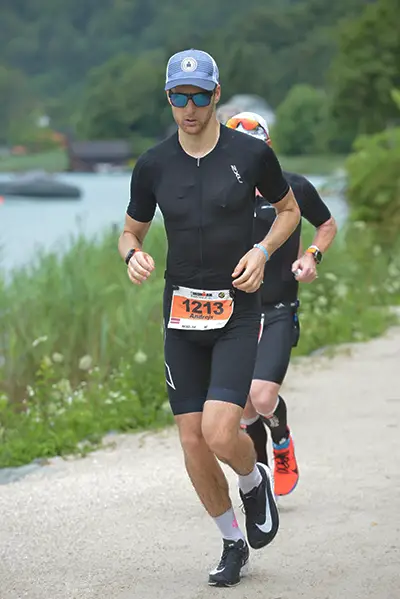
Low on energy again
After 3K I finally settled into a pace of 4:50 – one that I normally maintain during training. My heart rate was in mid-zone 2 and for a while running felt easy. However, soon after 5K I felt my legs getting heavy. Even though I suffered through that already twice today, I knew running has more impact than cycling and is, therefore, more alarming.
That was one of the most sobering parts of the race. Feeling tired and knowing you still have 37K to run. Or walk…
I tried to get more carbs into me. But, as I reached to my back pockets, both gels I carried out of transition were not there. They fell off during the first couple of kilometers.
My plan B for this kind of situation was to take gels that are provided on course. However, I didn’t research that strategy well enough and only knew there were 20 grams of carbs in on-course gels, compared to 26 in PowerBars I was using.
The execution of plan B went horribly wrong. The brain doesn’t work as you would expect after 7 hours of exercising. Trying to do simple math and calculate how many gels you need turned out to be an impossible job.
I ended up taking a gel at almost every aid station from 8K to 13K. That’s roughly 3 gels within 45 minutes!
Fighting GI issues
It didn’t take long for my stomach to start to protest. To avoid the nasty details, let’s just say I struggled for more than an hour while stopping 3 times at the toilet.
It was really frustrating to slow down to minimize the feeling of the stomach ‘jumping up and down’. And then also wait in line for the bathroom.
The half marathon mark was physically the hardest part of the race. I was low on energy (again) and couldn’t do much about it. I did try to take in one more gel, but it didn’t sit well. So, for the next 7K I switched to drinking water and iso only.
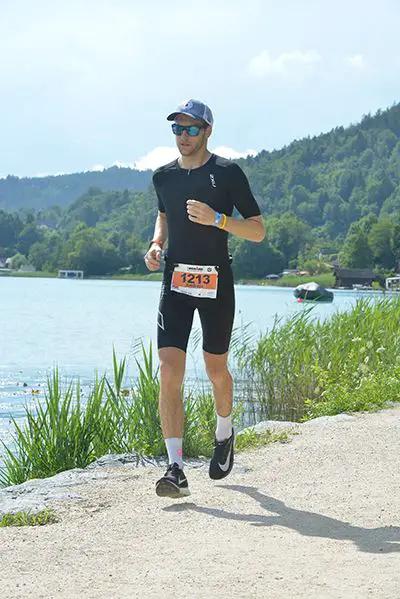
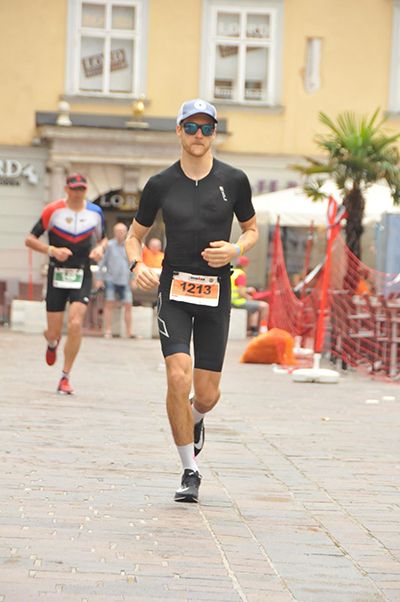
I was walking through aid stations to make sure I drink a lot of water. My pace was around 5:15 (still not bad), but dropped to 5:45 for some sections.
Overall, it felt like running up a hill. And remembering that I have more than 20K still to go was not helping at all. So, I just focused on putting one step in front of the other. Easy does it – watch the spectators, enjoy the view.
At 28K I noticed crackers and watermelon and made an executive decision to try those out. I hoped it would make whatever is left in the stomach more solid.
They say Ironman doesn’t really start until the marathon and I was experiencing it first hand. That part got me suffering a lot.
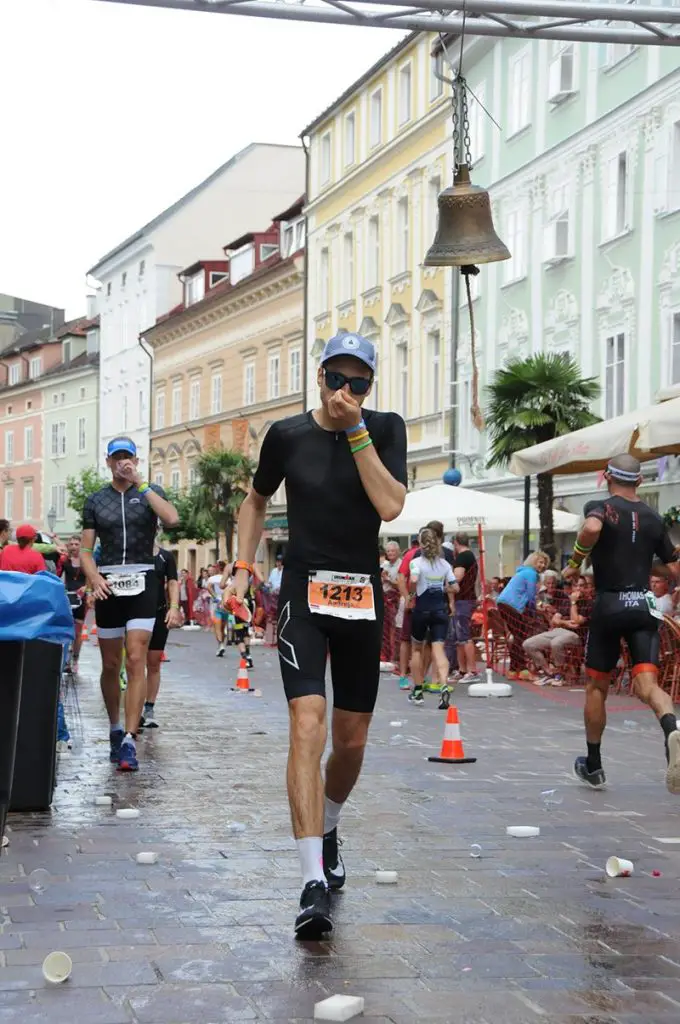
Give it all you got
My water-iso-cracker-watermelon strategy seemed to work. The stomach felt fine again and I was able to pick up the pace first to 5:00 and then to 4:40min/km. Miraculously, at 33K I felt better than at the start of the marathon.
I carried a gel with caffeine on me since transition. Because I put it under the tri-suit next to my chest it was the only one that didn’t fall off. I took it around 33K and never looked back.
The last 10K was a pure bliss. I felt 100% the opposite effect from an hour ago. Instead of fading, I was putting in more effort with every kilometer and passing lots of people. The caffeine gel seemed to work just like it did during the Berlin marathon.
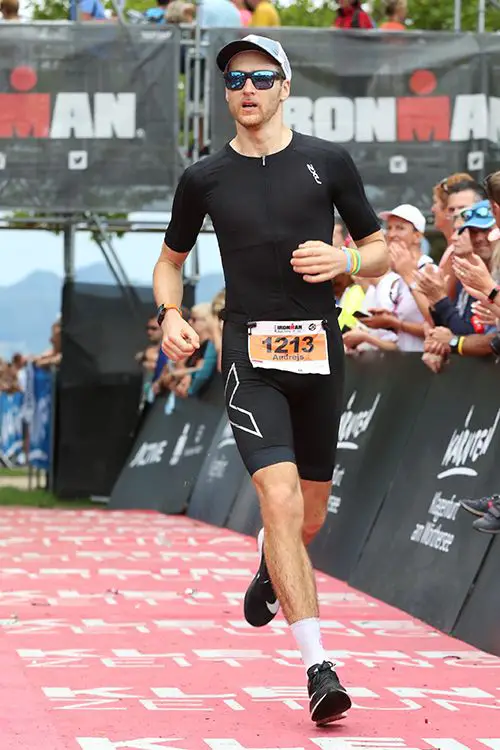
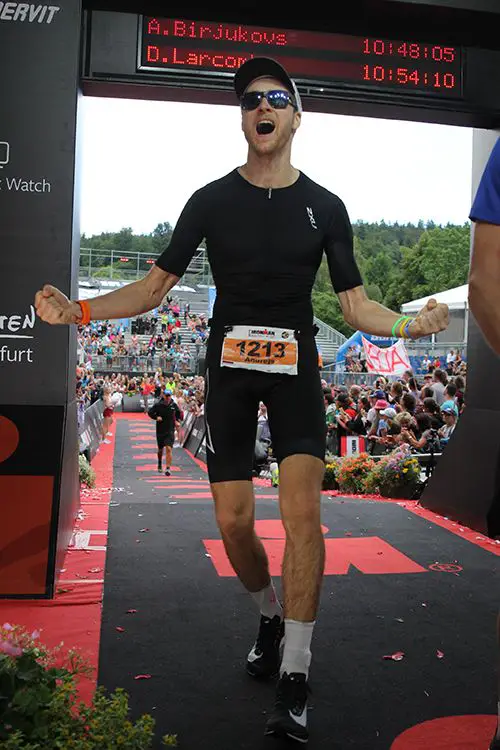
As I ran the last kilometers I felt strong. I couldn’t believe that just an hour ago I was hardly moving and now, after 10+ hours, I was running strong. And then came the best part of the day.
Run time: 3:42:15 (total: 10:48:05). I did it – crossing the line of my first Ironman race was very emotional. I’m glad I had the mental strength to keep going after all the setbacks and enjoy it till the end.
View this post on InstagramA post shared by Andrejs (@theathleteblog) on
Why did I put myself through this in the first place?
My first Ironman race was a real adventure and I’m glad I lived it fully. I’m satisfied that I persevered through difficulties and fought till the end.
But why did I do it?
Well, I wanted to test myself. Push the boundaries and see how I would cope with complete exhaustion and how mentally strong I am. And, of course, learn how to improve mental resilience, overall strength and endurance to be prepared for something like this.
As I look at it a couple of weeks later, I see how much the whole experience has taught me. This ‘project’ has pushed me beyond what I thought my level of comfort was and tested my resilience to the limit. But it didn’t break me. Instead it taught me what I don’t know and showed my weaknesses.
While I made some bad calls before and during my first Ironman race, the most important thing is that I accepted it, learned from it and moved forward. I came to the race with a humble mindset. Take care of whatever you can and let the God take care of the rest. And it worked.
Related: Analyzing My First Ironman Triathlon – What Would I Do Differently?
I promised myself not to judge anything for at least a couple of days and not analyze my first Ironman race until I fully recovered.
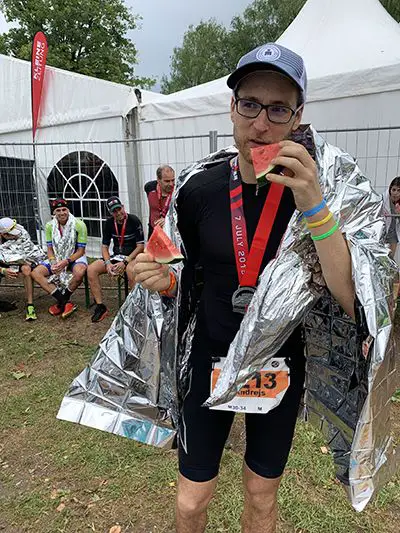
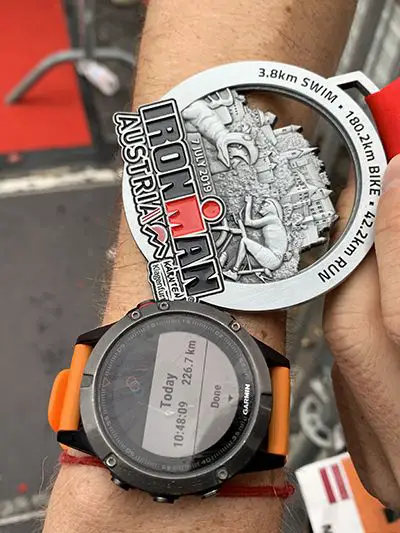
Feelings after my first Ironman race
Ultra endurance race is a test of pure strength and will. Training will prepare you to for it, yes, but when the going gets tough you have to rely on the strength of your mind, not the body.
New experiences always humble you and push you outside the comfort zone. Just like that time when we did an overnight kayak marathon with minimum preparation and zero experience in adventure racing.
Had my concerns taken the best of me when I started to lose wattage on the bike – who knows how long I would ride. Had I panicked and stopped at 5K and 21K marks of the marathon when my immediate thoughts were ‘I have a veeery long walk ahead of me’ – who knows if I’d pick myself up and started running again.
Mental strength and perseverance is really the only thing that matters. Just like in life, hard patches come and go, but as long as you keep putting one foot in front of the other and focus on not letting go you’ll overcome any obstacle.
Did you find this information useful? Share the post with others using the buttons below.
Have an opinion? Share via links below and tag @theathleteblog
Andrejs
GET A FREE TRAINING PLAN
Subscribe to my email list and get access to a free 4-week “back in shape” training plan
You’ll also get two full-body strength sessions and some other goodies!
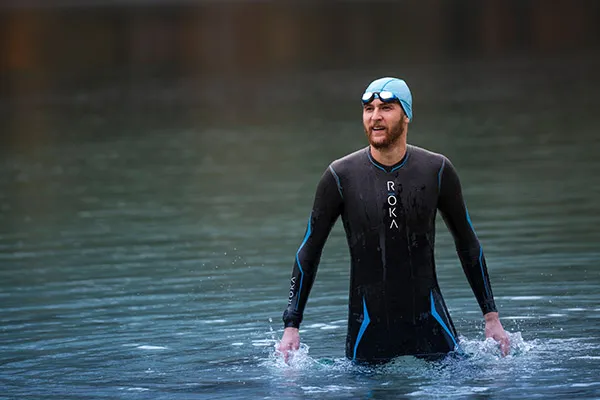
How did I get here?
Hey there! My name is Andrejs and I am here to inspire, entertain and get you fit for any adventure.
I went from being an over trained pro athlete to an endurance coach sharing how to listen to your body and live life to the fullest.
Traveling, new sports & activities brought new meaning to my training and made it much more effective, fun and enjoyable. And I'm here to help you do the same.
